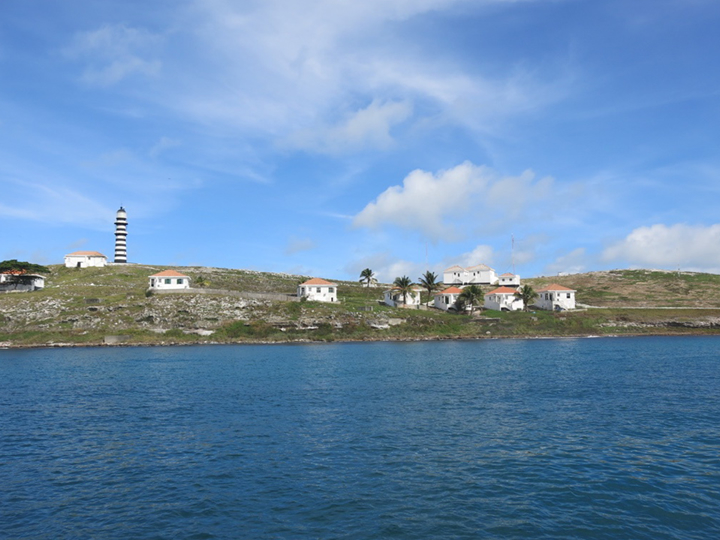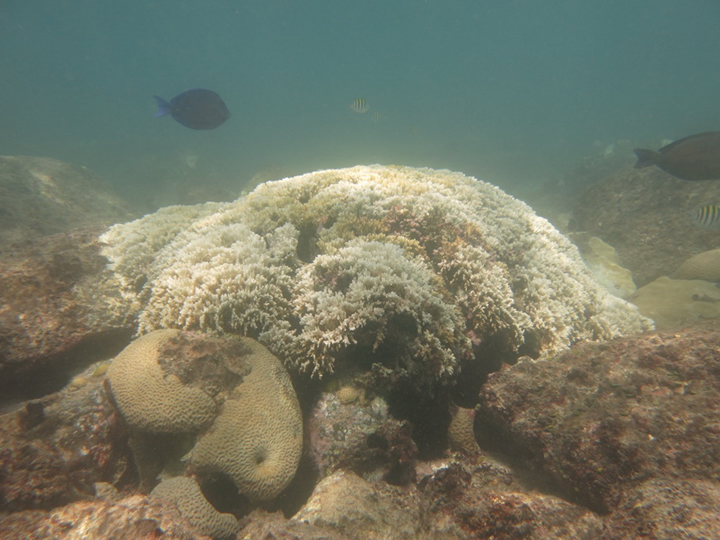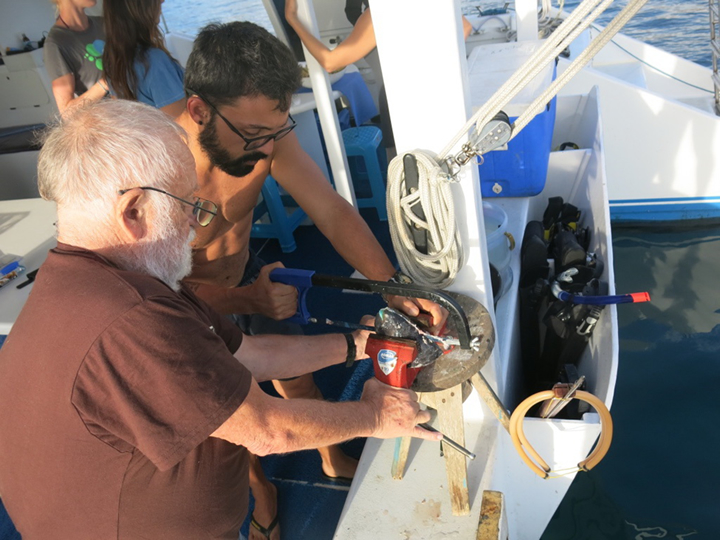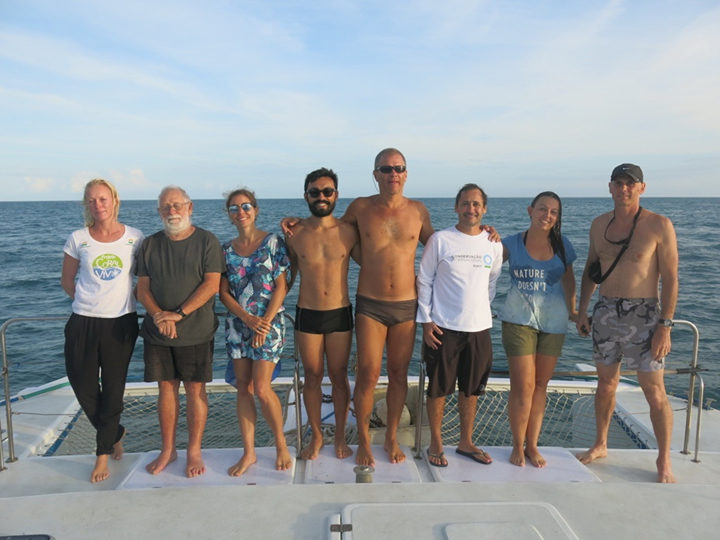Expedition: Abrolhos Reef Complex
(between 17°20’– 18°00’ S and 38°30’–39°30’ W)
During 2-7 May, members of LECAR, USP and Conservation International organized an expedition to the Abrolhos
reef complex.
Situated in northeast Brazil, the Abrolhos reef complex is the southernmost coral reefs of the Western Atlantic
Ocean, harboring a diverse fauna and considered the richest and largest reef system of the southwest Atlantic. Part
of the Abrolhos reefs comprises the Marine National Park of Abrolhos, with ~890 km² of the area protected from
fishing and ~2908 km² of multiple-use.
During the expedition, the scientific team collected comparative data on nutritional ecology and demography of
nominally herbivorous fishes for a comparative study along a latitudinal gradient at the Brazilian coast, and also for
inshore and offshore reef comparisons in Abrolhos. The team also performed visual censuses and video-plots to
analyze herbivorous reef fish abundance and reef accretion/bioerosion experiments led by Conservation
International. The sampling program took place in the islands of Abrolhos Archipelago, on offshore reefs (Parcel
dos Abrolhos) and inshore reefs (Timbebas and Paredes). Both inshore and offshore reefs harbor unique
mushroom-shaped formations called “chapeirões” (pinnacles), forming isolated columns of biogenic material that
may fuse at the top and form large and irregular reef structures, of which some become exposed in low tide. Most of
the coral cover at Abrolhos reefs is dominated by the species Mussismilia braziliensis, M. hispida and M. hartti and
the branching hydrocoral Millepora alcicornis and more a dozen massive species. The visibility wasn’t the usual for
Abrolhos due to a cold front the days before the expedition, but stayed around 10 meters with water temperatures
about 26-27°C. High-intensity coral bleaching was detected on all locations, affecting mostly M. alcicornis, M.
hispida, M. hartii, Monstastrea cavernosa and other massive species due to high temperatures event in the last
month (28-29oC).
This project is funded by CNPq (Brazilian Research Funding), and while in Abrolhos and Caravelas city in the coast,
the scientific team including researchers from LECAR-UFF, University of São Paulo, James Cook University and
University of Auckland had the support from Conservation International and CEPENE (National Center for Research
and Conservation of the Northeast Coast).

Santa Bárbara Island, Abrolhos Archipelago.

Bleaching on fire corals Millepora alcicornis.

Part of the processing work on boat. Here, head sections of scarid species.

Expedition team from left to right: Linda Eggertsen (LECAR), Howard Choat (James Cook University), Roberta Bonaldo (USP),
Gabriel Ferreira (Ictiolab-UFES/LECAR), Carlos E. L. Ferreira (LECAR), Eduardo Camargo (Conservation International), Renata
Pereira (Conservation International) and Kendall Clements (University of Auckland).
Written by: Gabriel C.C. Ferreira
|









